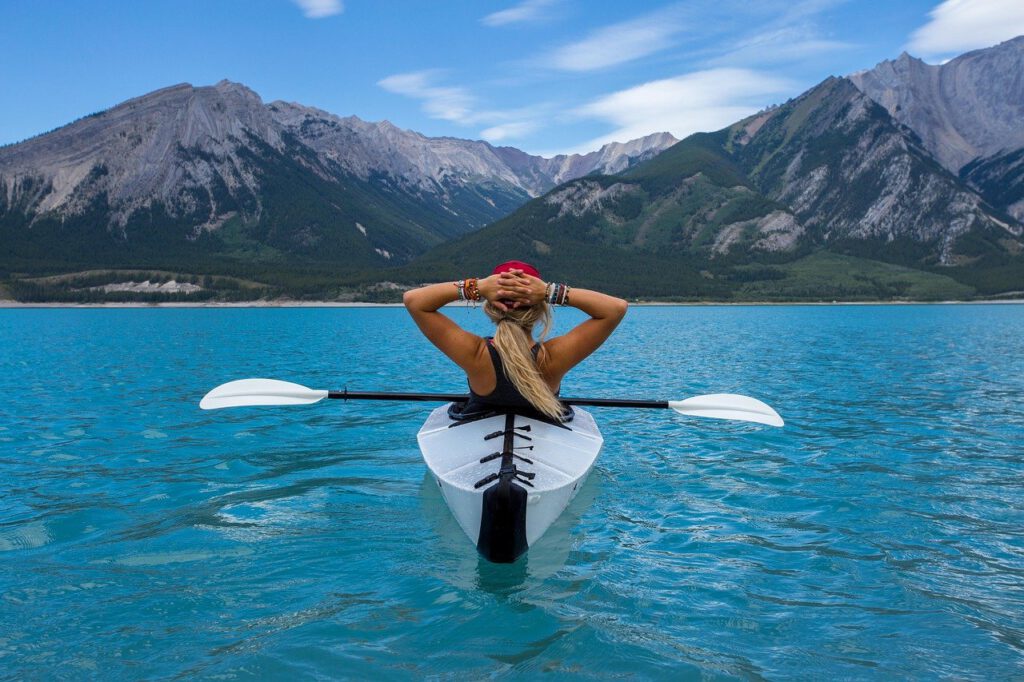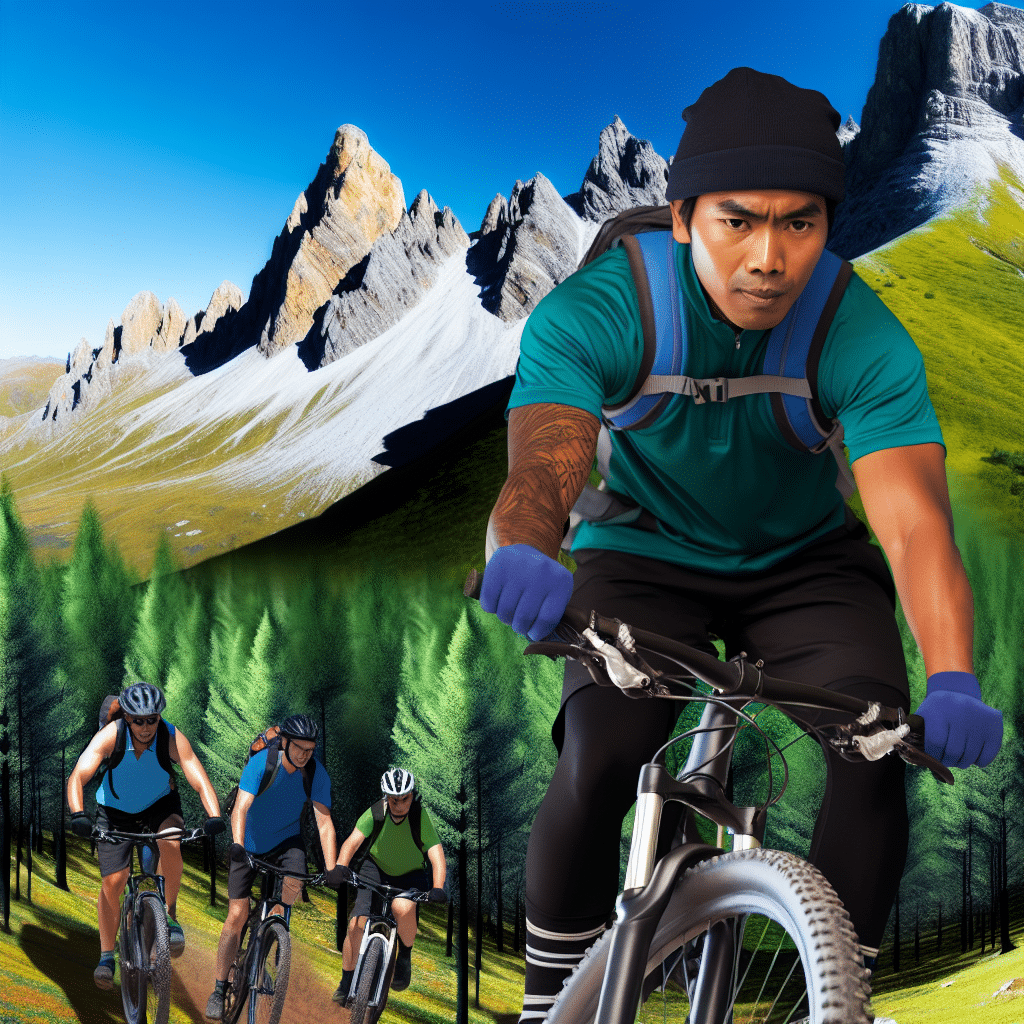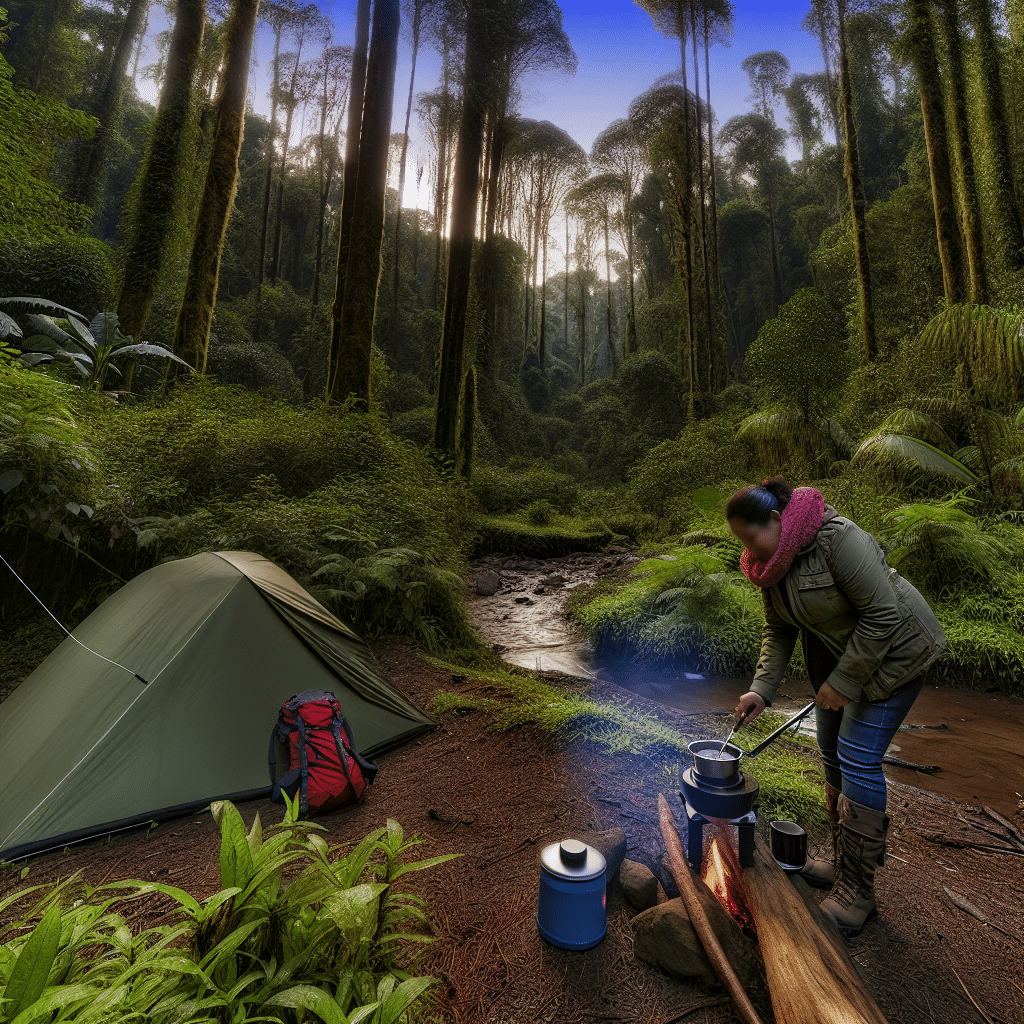Kayaking and canoeing, despite always being lumped together, are actually two different activities.

Kayaking is a great way to see nature from a different perspective than most people have the opportunity to experience. The immense concentration required to navigate whitewater makes kayaking an intense experience that can be appreciated by any thrill-seeker as it requires equal parts physical ability and mental toughness.
However, kayaking is not for everyone, especially if you are used to the idea of a canoe where you sit or kneel in an open boat using a paddle with one blade.
The differences in how the boats are rigged up is another clue that they are not the same type of watercraft. Where in most larger canoes there will be two seats facing towards each other that allows for ease of paddling along with spots behind to store gear or even lie down and take a nap, kayaks on the other hand will likely not have any seats. Kayak paddles as well as their canoe counterparts look very different as well.
The one similarity that is shared by both boats is that they are used for leisure or sport, and depending on the skill level of the person paddling it, can be used to travel long distances through calm waters or white water rapids. This article however focuses on trips down calmer rivers and lakes, so we’ll leave whitewater kayaking to another day.
If you love to spend time outdoors whether its reeling in your favorite fish at your favorite fishing hole or just enjoying a day out with friends and family relaxing on the water, either of these two types of boats are perfect for you.
So next time someone asks if you kayak or canoe, make sure to let them know that they are two very different things!
Which should I buy? Canoe or Kayak?
If you’re just starting out, here’s a little advice. If you’re planning on doing mostly flat water paddling with occasional trips across small bays or through calm rivers and if you feel like buying one boat to do it all, buy a canoe (duh). On the other hand, if you live in an area where there are often white-caps along with good fishing opportunities, fork over the extra cash for the kayak instead – because canoes don’t track well in rough waters.
Here’s one interesting fact to share: Did ya know that both kayaks and canoes trace their origin to the native people of North America? While canoes were used for fishing, coastal travel and trade by the Plains Indians, the West Coast tribes built kayaks that were used to hunt whales. Of course today there are many different types of both canoes and kayaks, which kind you get depends on what you’re planning on doing with it.
If you’re a beginner paddler – do not try to buy the cheapest one out there! Spend a little more cash if possible and get a really good boat. You will be doing yourself a huge favor down the road because cheap boats wear out quickly and even though it’s easy to find replacement parts for most old wooden boats, they don’t make ’em like they used to anymore. If you feel hesitant about spending too much cash, you can always rent a boat at your local outfitter – but make sure to check with them about one-way rentals as some places will not let you do that.
Is it easier to ride a canoe or a kayak?
Since a kayak is more streamlined, it’s faster. However, a canoe tends to be easier to turn and enter/exit from the water so if you plan on going ashore for some exploring along with fishing or camping out of the boat it might be a better choice.
For beginners who have never paddled either one before – practice in an area with lots of flat water and no boat traffic until you know what you’re doing. Once you’ve mastered the basics, head on down to your local river or lake and have some fun!
Now that’s a great question for last – because it all comes down to personal preference! While both are good ways to get out onto the water, we recommend you try both types and see which one you enjoy the most. But as long as you’re having fun, that’s what it boils down to!
Check out our other canoe and kayak articles for more tips and advice on how to choose the right boat for you: Kayak vs Canoe – Tips For Deciding On The
Which is better kayaking or canoeing?
Every year millions of people go out on their kayaks and canoes to experience the world around them. Kayaking and canoeing offer a great way to get outside, be active and see some beautiful places without spending too much money or putting in long hours at the gym.
Kayaking is one of the fastest growing sports in America today because of its low impact and consistent cardio workout.
Canoeing, on the other hand, is a great way to get back to nature with your friends and family. Whether you’re racing down a river or drifting in a lake, canoeing allows you to relax and enjoy the water around you. There really isn’t much difference between kayaking and canoeing, besides the fact that one is done with a boat and the other is done with a paddle. If you’re brand new to the sport of kayaking or canoeing there are many different things you will need to know.
What makes a canoe different from a kayak?
To start, a canoe is far more stable than a kayak. While a couple of tips to the side on a kayak may make you nervous, going over in a canoe will hardly cause any concern at all because the rounded bottom and sides keep everything afloat. Because it’s more stable, generally families with young children or elderly people who are new to kayaking, will prefer a canoe.
Another difference between the two styles of boats is that canoes are designed for paddling with long straight shafts, while kayaks use shorter shafts with bent tips or grips. While you can buy special paddles for your canoe if you’d like them to be interchangeable with kayak paddles, they’re not really necessary.
Another difference between a kayak and a canoe is that canoes normally have two seats in them while kayaks only have one.
What is the point of kayaking?
The point of kayaking is to get out on the water, enjoy yourself and be active while doing it. While getting in the best shape of your life is a great benefit of kayaking, the simple pleasure of being on the water and doing something fun with your friends or family is one of the best benefits you’ll get.
If you’re thinking of buying a kayak for yourself or someone else, there are plenty of things to think about. A general rule of thumb is that you want to pick a kayak that has more volume, meaning it holds more air and therefore doesn’t sink as easily. This is important for beginners who may not have mastered the correct way to get in and out of their kayaks, or people who are just learning to roll (a kayaking technique that involves getting back in your boat after flipping over).
Are canoes stable?
Canoes are extremely stable and many people will say that they’re the most stable boats on the water. While kayaks and canoes both have rounded bottoms and sides, the canoe’s flat bottom allows it to go through waves and rough water easier. This is really useful for people who want to take their boat out when the weather could be a little stormy.
In addition to being able to handle rougher water better, canoes are also much faster when going straight. The flat bottom also makes them track better, which means they’re easier to paddle because you don’t have to keep correcting the direction that the boat is facing.
Canoes are generally designed for one or two people, but can be paddled by one person if necessary. They’re normally made out of wood, aluminum and fiberglass and sometimes a combination of different materials.
One of the most popular kinds of canoe is called a tandem canoe which has two seats with adjustable foot pegs in it, allowing people to paddle together or by themselves with ease.
Do canoes flip easily?
One of the biggest fears that people have when they’re looking into buying a kayak or canoe is that they’ll flip over. The good news is, unless you’re paddling in rough water in a very windy day, this shouldn’t be an issue.
Canoes with two seats in them offer you and your partner a lot more stability which is great. They also offer more room for supplies, equipment and even pets if you like to take them out on your boat with you.
If you’re planning on getting a canoe or kayak for yourself, make sure that you get one designed for the way that you want to use it. For example, if you’re buying a canoe for a family of four, you’ll probably want to get a bigger boat that has more seating and room for supplies. If it’s going to be just one or two people in the canoe, you can make do with something smaller.
Are shorter canoes more stable?
This depends on the boat, but generally speaking shorter canoes with more volume will be more stable than longer ones. This is because they’re designed to handle rougher water and they don’t tip over as easily.
How deep should a canoe be?
The depth of the canoe is really more of an issue related to performance than anything else. The deeper the boat, the faster it will be able to go. This is because they cut through water better and don’t have any waves slowing them down in the process.
How shallow can a canoe go?
Two people should be able to get in and out of a canoe with no problems at all. If you plan on getting your dog or another pet with you, make sure that they won’t mind getting into the boat by themselves.
Canoes are capable of going in water that is about 2 feet deep. If it’s any shallower than that, you’re probably better off getting a kayak.
How much can you draft on a canoe?
Drafting is a kayaking technique that involves partially submerging the boat in water and then moving it forward. It’s a great way to move faster without pushing yourself too hard.
Most canoes are only going to draft about an inch of water, which is enough for them to go through but not as much as you would be able to get out of a kayak.
What does rocker mean on a canoe?
When people talk about rocker on a canoe, they’re referring to the profile of the boat. A flat bottomed canoe will have no rocker at all, while one with more pronounced curve will have increased amounts of it.
Rocker makes canoes easier to turn and paddle so you’ll be able to go around obstacles more easily. It also makes them more stable.



